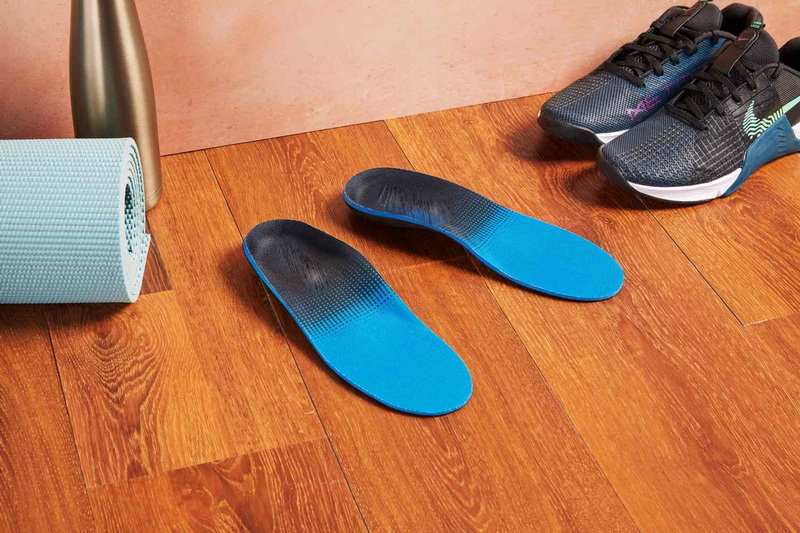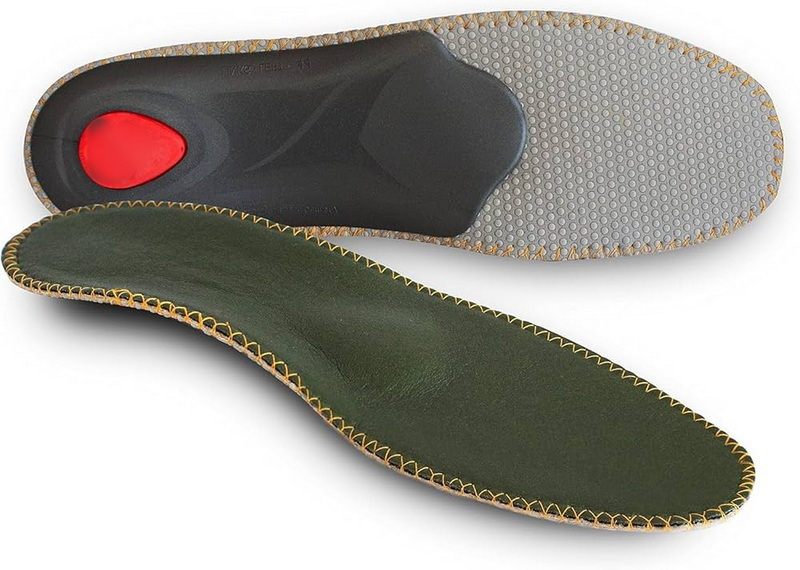Views: 222 Author: Edvo Publish Time: 2025-11-17 Origin: Site











Content Menu
● Understanding Foot Arches and Their Importance
>> The Wet Test
● Types of Insoles for Various Arches
>> Gel Insoles
>> Foam Insoles
● Key Elements of Well-Fitting Insoles
>> Heel Support
● Fitting Insoles: Step-by-Step Guide
● Injury Prevention and Performance Benefits
● Customization and OEM Solutions for Brands
● Sizing, Maintenance, and Replacement
● Everyday Tips for Foot Health
● FAQs
>> 1. What's the easiest way to find my arch type?
>> 2. Can I fit insoles into any shoe style?
>> 3. How often should I replace my insoles?
>> 4. What if my two feet have different arch heights?
>> 5. Why do my feet sometimes hurt after using new insoles?
Finding insoles that fit your arch correctly is an essential aspect of foot health, comfort, and overall wellbeing, especially for those who experience foot fatigue, plantar fasciitis, or have unique arch profiles. This comprehensive guide combines practical insights, up-to-date methods, and actionable tips to help both individuals and brand owners understand, choose, and benefit from the right arch-supporting arch insoles. Whether you're an active professional, an athlete, or a manufacturer seeking high-quality OEM solutions, this article will empower you with the knowledge needed for an optimal fit.

Your foot arch—the curved part of your foot between the ball and the heel—is the foundation for how your body distributes weight and absorbs impact. Recognizing your own arch type is the first step in the process of getting insoles that truly fit.
- Flat or Low Arch: Minimal curve, foot often appears to touch the ground almost completely.
- Normal or Medium Arch: Noticeable curve; most weight is distributed across the heel and ball.
- High Arch: Pronounced curve; weight primarily falls on the heel and ball, with less surface area in contact with the ground.
Arch support helps to stabilize the foot, improve posture, reduce undue stress on muscles and joints, and provide a foundation for natural movement. The right support prevents overpronation (excessive inward rolling of the foot) for low arches or supination (excessive outward rolling) for high arches.
1. Wet the bottom of your foot.
2. Stand on a piece of clean paper or cardboard.
3. Remove your foot and observe the imprint:
- A full foot imprint suggests a low arch or flat feet.
- A moderate curve between the heel and the ball indicates a normal arch.
- A narrow connection or only a heel and ball print signifies a high arch.
- Direct Measurement: Measure the vertical distance from the ground to the highest point of your arch while standing.
- Pencil Test: Slide a pen or pencil under the arch when standing; the more space, the higher your arch.
Understanding your arch profile is crucial for selecting an insole that matches your needs and prevents discomfort or injury over time.
Orthotic insoles are either prescription or over-the-counter devices designed to offer structural support and address specific foot mechanics, injuries, or conditions. They are often firmer and tailor support for those with significant overpronation or supination.
These provide enhanced cushioning and shock absorption. Gel insoles are especially useful for everyday wear and for those seeking relief from minor discomfort rather than structural corrections.
Foam insoles have flexible, shock-absorbing properties and gently contour to the feet. Memory foam, in particular, delivers personalized comfort by molding to your foot shape.
Designed for different arch types—low, medium, or high—these insoles are constructed to supply the precise level of support and correction each arch profile needs. For high arches, extra cushioning is included; for flat arches, support is firmer and more corrective.
The heel cup is essential for stability. For flat feet and overpronators, a deeper, reinforced heel cup can prevent rolling and alleviate ligament stress. High-arched individuals will also benefit from heel support that prevents slippage and enhances shock absorption.
- EVA Foam: Lightweight and shock absorbing, ideal for daily use.
- Gel: Superior cushioning for high-impact activities.
- Memory Foam: Custom contouring for luxury comfort.
- Carbon Fiber: Durable and rigid, suitable for athletes or high-impact scenarios.
Matching arch profile with materials and heel structure ensures all-day comfort and performance.
1. Outline and Trim: Remove the existing sockliner from your shoe, use it as a pattern, and trace its outline onto the new insole. Trim the insole along the traced line for a precise fit.
2. Insert and Adjust: Place the trimmed insole into your shoe, ensuring it lays flat without bunching. Stand and walk to test comfort. Adjust by trimming small sections at a time if necessary.
3. Match Volume to Shoe Type: Low-volume insoles for slim shoes or dress footwear; medium-volume for most casual or athletic shoes; high-volume insoles for boots or shoes with extra room.
Take time fitting your insoles. Shoes and feet are unique, and sometimes small adjustments lead to significant improvements in comfort.

Arch-support insoles not only enhance comfort but also play a preventative role in reducing the likelihood of injuries such as plantar fasciitis, Achilles tendonitis, bunions, knee pain, and lower back strain. Optimal insoles help maintain proper foot alignment, reduce excess motion, and provide shock absorption, supporting both daily health and athletic performance.
Insoles with the correct heel cup, arch shape, and material quality actively reduce the risk of blisters, shin splints, and ankle sprains, especially during vigorous activities or long periods of standing and walking.
As a leading Chinese OEM insole manufacturer, we specialize in providing tailored solutions that enable brands and wholesalers to distinguish themselves in global markets. Through advanced manufacturing:
- OEMs can specify insole shape, arch height, and material according to their audience's demographic preferences.
- Branding opportunities extend to insole coloration, imprinting, and packaging design.
- Research-driven engineering allows for the production of insoles suitable for sports, work, mass markets, or special medical needs.
By collaborating with experienced OEMs, clients ensure their consumers receive products that fit both their feet and functional requirements.
- Choose an insole designed for your shoe size, but always test fit before final trimming.
- High-performance sports shoes may require exact arch and heel placement for injury prevention.
- Sizing up is better than down—an insole that's too small can't be corrected, but one oversized can always be trimmed.
- Insoles should be replaced every 6-12 months based on usage frequency, activity level, and visible signs of wear like compression or breakdown.
- For users with medical conditions or high-impact lifestyles, more frequent replacement is recommended to maintain optimal support and hygiene.
- Ignoring Arch Height: Generic “one-size-fits-all” insoles often provide inadequate support.
- Wrong Volume: Placing a thick, cushioned insole in a tight-fitting shoe can create discomfort and circulation issues.
- Combining Multiple Insoles: Using more than one insole can destabilize foot mechanics and cause blisters.
- Neglecting Footwear: A well-fitted insole won't compensate for ill-fitting or worn-out shoes.
Always prioritize understanding your personal needs and experiment within recommended guidelines to identify what works best for you.
- Alternate shoes daily to allow insoles to decompress and air out.
- Pair orthotic or support insoles with moisture-wicking socks for enhanced comfort.
- After intense activity, remove insoles to speed up drying and prevent odor.
For further relief, regular foot stretches and exercises are recommended, as strong and flexible muscles better support arches and contribute to overall health.
Selecting insoles that fit your arch is about more than comfort—it's about unlocking the foundation of proper posture, movement, and injury prevention. Evaluating your foot arch, understanding insoles' material and structure, and following best-fitting practices are crucial steps toward lifelong foot health. When partnering with a specialized OEM, brands gain access to premium craftsmanship, wide customization, and a trusted route to international markets.

Use the wet foot test, or consult a shoe specialist for a professional assessment.
Yes, as long as you select the correct volume for the shoe and trim as needed for an exact fit.
Replace every 6-12 months or sooner if your needs or the insole condition changes.
Custom or heat-molded OEM insoles can accommodate separate arch needs for each foot.
It may take several days to adjust. Persistent pain suggests trying a different arch height or material.